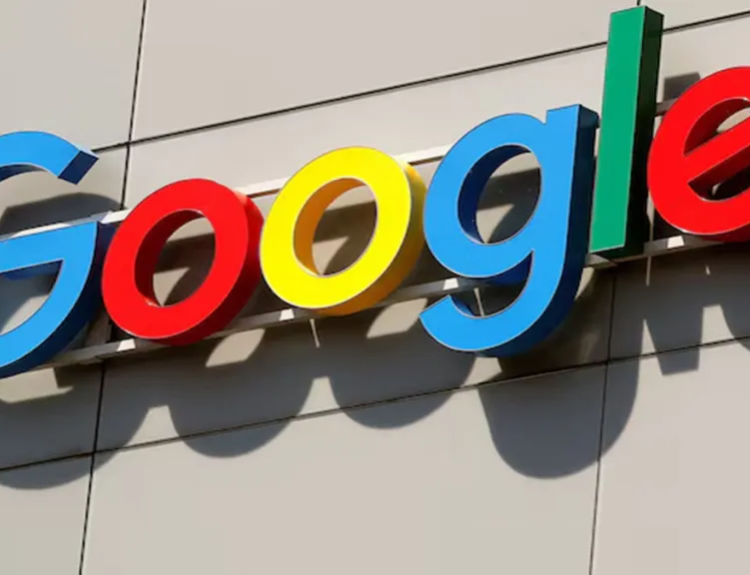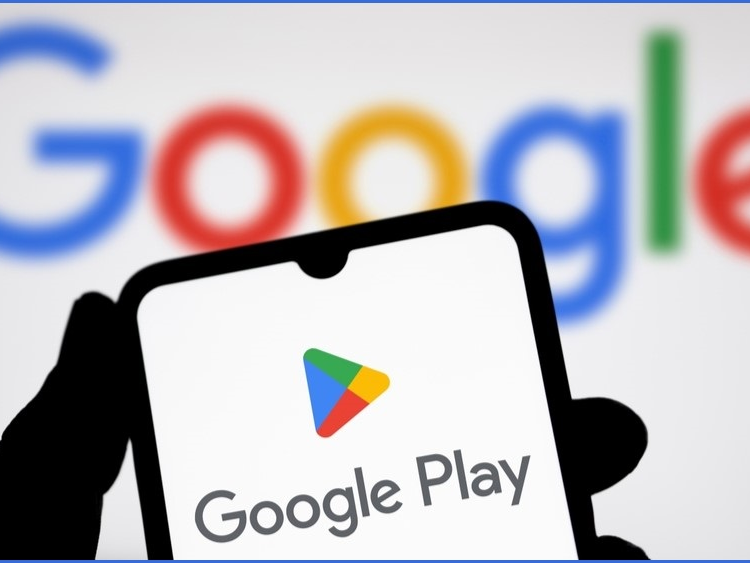Imagine holding the very blueprint that sparked a technological revolution, a piece of code so foundational that it gave rise to one of the most influential companies in history. That’s precisely what Bill Gates has gifted to the world by releasing the original Microsoft source code. This isn’t just a nostalgic nod to the past; it’s an invitation to explore the roots of personal computing and reflect on how a few lines of code can reshape our world. In this detailed exploration, I’ll take you through the historical significance, the technical marvels, and the enduring legacy of this release, all while weaving in the excitement that gadget enthusiasts like myself feel about uncovering the DNA of modern technology.
The Dawn of Personal Computing: The Altair 8800
To understand the magnitude of this source code, we need to step back to the mid-1970s, a time when computers were far from the sleek, pocket-sized devices we know today. Back then, computing was dominated by massive mainframes—hulking machines that filled entire rooms, requiring teams of engineers and punch-card inputs to operate. These behemoths, like the IBM System/360, were the preserve of corporations, universities, and government agencies, out of reach for the average person. But in January 1975, everything changed.
A small company called Micro Instrumentation and Telemetry Systems (MITS) unveiled the Altair 8800, a personal computer kit that graced the cover of Popular Electronics magazine. Priced at $395 in kit form or $621 assembled (about $2,000 today, adjusted for inflation), it was a radical departure from the norm. Powered by the Intel 8080 microprocessor, the Altair didn’t boast a screen, a keyboard, or even a mouse—just a box with switches and blinking lights. Yet, it ignited a spark among hobbyists and tinkerers. For the first time, computing power was accessible to individuals willing to assemble it themselves.
However, the Altair 8800 had a glaring limitation: it lacked software to make it usable beyond flipping switches to input binary code. This is where two young visionaries, Bill Gates and Paul Allen, entered the scene. Then a 19-year-old Harvard student, Gates, alongside his friend Allen, saw the Altair as more than a curiosity—they saw it as the future. They contacted MITS with a bold claim: they had developed a version of the BASIC programming language that could run on the Altair. The twist? They hadn’t written a single line of it yet. Fueled by ambition and a belief in personal computing, they embarked on a mission that would change technology forever.
Crafting the BASIC Interpreter: A Technical Triumph
The task Gates and Allen set for themselves was nothing short of Herculean. They had two months to create a BASIC interpreter—a program that could translate human-readable BASIC commands into machine language the Altair’s Intel 8080 chip could execute. Complicating matters, they didn’t have an Altair to test their work on. Instead, they relied on a simulator Allen crafted to mimic the Intel 8080’s behavior, running it on a PDP-10 mainframe at Harvard University.
BASIC, originally developed in 1964 at Dartmouth College by John Kemeny and Thomas Kurtz, was an ideal choice. Known as the Beginner’s All-purpose Symbolic Instruction Code, it was designed to be simple and accessible, unlike the arcane assembly languages or Fortran used by professionals. Gates and Allen aimed to bring this simplicity to the Altair, making programming approachable for hobbyists, students, and dreamers—not just seasoned engineers. You can learn more about BASIC’s origins at Dartmouth’s official history page.
Joined by Monte Davidoff, who tackled the floating-point arithmetic routines essential for mathematical operations, the trio worked relentlessly. The Altair’s constraints were severe: it had just 256 bytes of memory in its base configuration, expandable to 4 kilobytes with additional modules. Their interpreter had to be compact yet powerful, leaving room for users to write their own programs. Every line of code was scrutinized, optimized to squeeze into this tiny memory footprint.
They wrote the interpreter in assembly language, a low-level coding method that directly corresponds to the microprocessor’s instructions. Unlike today’s high-level languages like Python or JavaScript, which abstract away hardware details, assembly required intimate knowledge of the Intel 8080’s architecture—its registers, instruction set, and memory addressing. This painstaking process paid off. When they flew to Albuquerque, New Mexico, to deliver the software to MITS, it ran perfectly on the first attempt—an astonishing feat that underscored their skill and foresight.
The Ripple Effect: BASIC and the Birth of Microsoft
The release of Altair BASIC in 1975 was a game-changer. Suddenly, the Altair 8800 wasn’t just a box of blinking lights; it was a tool for creation. Users could write programs to perform calculations, play games, or automate tasks—all in a language they could learn quickly. This accessibility turned hobbyists into programmers and sparked a grassroots movement that would define the personal computing era.
Altair BASIC wasn’t just a product; it was the cornerstone of a new company. Gates and Allen formalized their partnership as “Micro-Soft” (later simplified to Microsoft), with a mission to put software at the heart of personal computing. Their interpreter became a hit, selling thousands of copies and establishing Microsoft as a key player in a nascent industry. The Computer History Museum offers a detailed look at Microsoft’s early days.
The impact of BASIC rippled far beyond the Altair. It became the de facto language for early personal computers, powering machines like the Apple II, Commodore 64, and eventually the IBM PC. Its simplicity inspired a generation of coders—many of whom, like Apple co-founder Steve Wozniak, credit BASIC with igniting their passion for technology. Microsoft iterated on this success, releasing versions like GW-BASIC and QuickBASIC, cementing BASIC’s legacy as the gateway to programming.
The 2025 Reveal: Gates Shares the Source Code
Fast forward to 2025, and Bill Gates has opened a time capsule for the world. In a heartfelt post on his Gates Notes blog, he announced the release of the original Microsoft source code to celebrate the company’s 50th anniversary. Accompanied by a photo of himself holding a towering stack of paper—the printed form of that historic code—Gates called it “the coolest code I’ve ever written.” It’s a bold statement from a man whose career has spanned decades of innovation, but one that resonates with the significance of this moment.
The source code, written in Intel 8080 assembly language, is now available for anyone to download from Gates’s blog. For gadget enthusiasts like me, this is akin to unearthing a technological Rosetta Stone. It’s not just lines of code; it’s a snapshot of 1975, a testament to the ingenuity that birthed an industry. Gates’s decision to share it isn’t merely ceremonial—it’s an act of transparency and education, inviting us to peer into the machinery of Microsoft’s origin story.
Decoding the Code: A Technical Deep Dive
The microprocessor had an 8-bit architecture, meaning it processed data in 8-bit chunks, with a clock speed of about 2 MHz—laughably slow by today’s standards. Memory was measured in bytes, not gigabytes, and storage was often paper tape or cassette tapes, not SSDs. Intel’s own history page provides a deeper dive into the 8080’s specs.
The BASIC interpreter had to perform multiple tasks: parse user input, translate it into machine instructions, manage memory, and execute programs—all within a 4K memory limit. This required ruthless optimization. For instance, the floating-point routines Davidoff contributed allowed the Altair to handle decimal numbers, a critical feature for scientific and financial applications, yet they had to fit alongside the core interpreter.
Today, programmers work with vast resources—terabytes of storage, multicore processors, and high-level languages that handle optimization automatically. But in 1975, every byte was precious. Studying this code offers lessons in resourcefulness and precision, qualities still vital in fields like embedded systems (think smartwatches or IoT devices) where efficiency remains paramount.
A Legacy Preserved: Why This Matters
Gates’s release is more than a nostalgic gesture; it’s a preservation of digital heritage. In an era where technology evolves at breakneck speed—think of the leap from floppy disks to cloud storage in mere decades—historical artifacts like this source code are invaluable. They connect us to the past, showing how today’s gadgets evolved from humble beginnings.
For historians, it’s a primary source, revealing the problem-solving techniques of early programmers. For educators, it’s a teaching tool, illustrating the evolution of software engineering. Imagine a classroom where students dissect this code, comparing it to modern Python scripts, tracing the lineage of programming from assembly to abstraction. For enthusiasts, it’s a chance to tinker with history, perhaps even running it on emulators to experience 1975 firsthand. The National Museum of American History has exhibits on early computing that contextualize this era beautifully.
This move aligns with a broader trend. Companies like Apple and IBM have also open-sourced early software, recognizing its cultural and educational value. Gates’s contribution adds a cornerstone to this digital archive, ensuring that Microsoft’s foundational moment isn’t lost to time.
The Tech Community Responds
The tech world has greeted this release with fervor. On platforms like X, reactions range from awe to reverence. One user hailed it as “a huge piece of tech history,” while another praised its “beautifully designed” structure. As a gadget reviewer, I echo this excitement—it’s not every day we get to peek under the hood of a tech titan’s origin story.
These responses highlight a shared appreciation for the roots of computing. For many, it’s a reminder that the smartphones, laptops, and smart home devices we review today owe their existence to pioneers like Gates and Allen. It’s a humbling thought: the gadgets we take for granted began with a few hundred lines of code and a vision.
Microsoft’s Evolution: From BASIC to Beyond
Microsoft’s journey from that first BASIC interpreter to a $3 trillion tech giant is a saga of adaptation. The company’s dominance came with Windows and Office, tools that made PCs indispensable in homes and offices. But under leaders like Steve Ballmer and Satya Nadella, Microsoft has expanded into cloud computing (Azure), gaming (Xbox), and artificial intelligence (think Copilot). You can explore Microsoft’s current innovations at their official site.
Nadella’s tenure, in particular, has seen a shift toward openness. Once fiercely proprietary, Microsoft now embraces open-source projects, contributing to Linux and hosting repositories on GitHub (which it owns). Releasing the original source code fits this ethos—a nod to collaboration and a bridge between Microsoft’s past and present.
Gates’s Reflections: A Personal Touch
In his blog post, Gates doesn’t just share code; he shares memories. He recalls the thrill of seeing the Altair on that magazine cover, the late nights coding with Allen, and the satisfaction of beating their deadline. He credits Davidoff’s math wizardry and marvels at how their simulator gambit paid off. These anecdotes humanize the story, painting Gates not as a billionaire icon but as a young coder chasing a dream.
He also reflects on Microsoft’s 50-year arc, thanking leaders like Ballmer and Nadella and the thousands of employees who built the company. Despite his wealth and fame, Gates finds joy in this “super cool” code—a sentiment that resonates with anyone who’s ever geeked out over a gadget’s inner workings.
The Evolution of Computing: Then and Now
Consider this: the Altair 8800’s 256 bytes of memory couldn’t store a single high-res photo from your smartphone. Today’s devices pack gigabytes of RAM and terabytes of storage, with processors running at gigahertz speeds. Programming has evolved too—from assembly’s raw complexity to languages like Python, where a single line can do what took pages in 1975. The IEEE Computer Society offers a timeline of this evolution.
Yet, the core principle endures: code tells machines what to do. The Altair BASIC interpreter was a stepping stone to graphical interfaces, cloud platforms, and AI models. As a gadget reviewer, I see this source code as the ancestor of every device I test—from the firmware in a fitness tracker to the OS in a gaming console.
Inspiring the Next Generation
This release isn’t just for nostalgia buffs; it’s for the future. Aspiring programmers can study it, seeing how big ideas start small. Entrepreneurs can draw parallels to their own startups, where resourcefulness trumps resources. For kids tinkering with Raspberry Pis or coding apps, it’s proof that passion and persistence can launch empires.
Gates’s act could spark a renaissance of interest in computing history. Imagine coding bootcamps using this code to teach optimization, or museums displaying it alongside the Altair 8800. It’s a call to action: learn from the past to build the future.
Cultural Echoes: The Hacker Ethos
The 1970s computing scene was steeped in a hacker ethos—not the malicious kind, but a culture of exploration and sharing. Groups like the Homebrew Computer Club, where Wozniak debuted the Apple I, thrived on open exchange. Gates and Allen tapped into this spirit, even as they built a commercial empire.
Releasing the source code revives that ethos. It’s a nod to the community-driven roots of tech, a contrast to today’s walled gardens. For gadget fans, it’s a reminder that innovation often starts with curiosity and collaboration, not just corporate R&D.
Looking Ahead: The Next 50 Years
Microsoft’s 50th anniversary isn’t just a look back—it’s a launchpad. The company is pioneering AI, quantum computing, and sustainable tech. Releasing the source code bridges these eras, showing how foundational work enables futuristic leaps. As a reviewer, I can’t wait to test the gadgets born from these advancements—imagine an AI-powered smart home or a quantum-driven wearable.
Conclusion: A Gadget Lover’s Reflection
The original Microsoft source code is a relic of ingenuity, a spark that lit the personal computing fire. From the Altair 8800’s blinking lights to today’s AI marvels, it’s a thread in the tapestry of innovation.
Bill Gates has given us more than code—he’s given us inspiration. For every device I unbox, there’s a lineage tracing back to 1975. So here’s to the past that built our present, and to the future we’ll create with the same bold spirit. Let’s celebrate Microsoft’s 50 years by honoring the code that started it all—and dreaming of the gadgets yet to come.
Top FAQs About Microsoft’s Original Source Code Release
1. Why Did Bill Gates Release the Source Code Now?
Bill Gates chose 2025 to release the source code as part of Microsoft’s 50th anniversary celebration, marking the company’s founding in 1975. In his Gates Notes blog, he expressed a desire to share this “coolest code” with the world, reflecting both nostalgia and a commitment to preserving tech history. It’s a gift to fans, historians, and future innovators.
2. Can I Run This Code on Modern Computers?
Not directly. The code was written in Intel 8080 assembly language for the Altair 8800, a machine with vastly different architecture than today’s PCs. However, you can run it using an emulator like AltairZ80, which simulates the 8080’s environment. Enthusiasts have already begun experimenting with this, as noted in tech forums.
3. What Does the Source Code Actually Do?
It’s the BASIC interpreter that powered the Altair 8800, allowing users to write and run programs in the BASIC language. It translates commands like “PRINT” or “GOTO” into machine instructions, enabling tasks from simple math to early games. The Computer History Museum explains how such interpreters were pivotal for early PCs.
4. Is This the First Time Microsoft Has Open-Sourced Something?
No, Microsoft has embraced open source in recent years under Satya Nadella’s leadership. Projects like .NET Core and contributions to Linux show this shift. However, releasing the original BASIC code is a unique historical gesture, distinct from modern open-source efforts.
5. How Big Is the Source Code?
The interpreter fits within 4 kilobytes—tiny by today’s standards. Printed, it spans hundreds of pages, as Gates showed in his blog photo. This compactness reflects the era’s memory constraints, a stark contrast to modern software like Windows, which requires gigabytes.
6. Who Owns the Rights to This Code?
Microsoft retains the copyright, but Gates’s release implies a permissive license for non-commercial use, typical for such historical shares. Exact terms would be on his blog, though they’re not specified in the CNET article. For comparison, Apple’s open-sourced Apple II DOS came with similar conditions.
7. What Can We Learn From It Today?
The code teaches efficiency and problem-solving under constraints—skills relevant to fields like embedded systems or IoT. It also offers a historical lens on programming’s evolution, as noted by educators at MIT’s Computer Science department. For hobbyists, it’s a chance to connect with computing’s roots.








